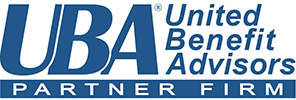
Hybridized jobs are no longer the exception in the workplace. They’re the norm. Employees are now expected to dabble in different areas, such as communications, IT and sales—all in one role. In fact, a recent study found that roles such as social media strategist and web designer are dying out, in favor of roles that require multiple “hats.”
So how can you find the candidates that will make good hybrid employees? What questions should you ask in the interview? Interviewing for the technical skills needed in a hybrid job is simple and straightforward. The difficult part is understanding how applicants function when they need to use a mix of hard and soft skills.
To understand this, hiring managers should use a behavioral interviewing approach. This approach uses questions designed to elicit responses that get at a candidate’s approach to working, such as dealing with a difficult supervisor or mentoring a new employee. To be effective, behavioral questions should be tied to situations that are real in your company and that any candidate would face on the job.
Here are some areas of behavior to gauge, questions to ask and responses you hope to hear (or hope you don’t hear) when trying to find a good fit for a hybrid position:
Handling conflict: How have you have handled working with another person who challenged your ideas?
- Good signs: The candidate shares examples of how he made a challenging teammate an ally by bringing him into the project more fully or giving him more challenging parts of the project.
- Red flags: The candidate explains how he shifted the challenger onto other projects, ignored him or got the project done without him.
Solving problems: How have you dealt with an upset customer or teammate?
- Good signs: The candidate gives examples of active listening, going the extra mile to fix the issue and following up with customers or teammates to make sure that they were satisfied with the resolution.
- Red flags: The candidate says she delegated the problem to her boss or another team because she couldn’t see a solution to the problem.
Working with teams: Could you describe a team project you’ve worked on that required working with people from other parts of the company?
- Good signs: The candidate shares how she included other people’s perspectives, and demonstrates that she understands it is vital to bring together the different skill sets of various team members to succeed.
- Red flags: Similar to the flags when gauging problem solving skills, a red flag would be if the candidate demonstrates a lack of willingness to work collaboratively.
Leadership: When have you taken the lead on a difficult project?
- Good signs: The candidate outlines his approach to managing projects, explains the challenge the team faced and how he worked to collaboratively lead the team to a successful outcome. He discusses how members of the team stepped up and describes why the success of the project was important to the company.
- Red flags: If the candidate takes ownership for the entirety of the project, or if he couldn’t adequately describe a situation where he actively supported his team on a project. He inflates what is actually typical day-to-day work to seem like an important project.
Dealing with adversity: Tell me about a time when you’ve made a mistake, and what you did about it?
- Good signs: The candidate honestly shares something she didn’t do well and what she learned from it. This illustrates her character, problem-solving abilities and how she manages adversity.
- Red flags: A canned response where the candidate highlights what she feels to be strengths. Example: “Because I wanted a better product, the team and I went over budget and were criticized for it.”
By using behavioral questions in your interview process, you will be able to find candidates who are versatile, collaborative, intellectually curious and responsible. These are the candidates who will thrive in a hybrid role, giving you a great hire and a stronger workforce.
Originally published by ThinkHR – Read More

